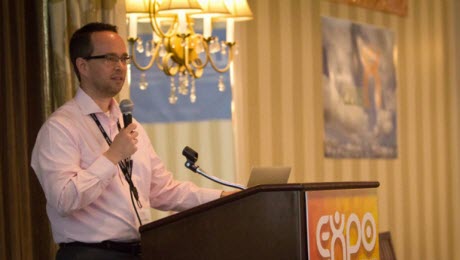
CMS Expo Keynote
In the world of commercial CMS platforms, architectural freedom is the thing that costs the most. It’s not really individual features (or even a large collection of features) that add significantly to the cost of a CMS application, but the freedom that some platforms give you to build absolutely anything you want may well stretch your budget.
The three essential differentiating characteristics of platforms that provide the highest levels of freedom are:
- Flexibility of the platform
- Scalability of the platform
- Completeness of the product suite
To give an anonymized real-world example, enterprise CMS platform X provides roughly the same feature-functionality out-of-the-box as enterprise CMS platform Y – not identical, but similar. However, CMS X has a far more flexible and scalable architecture, and its SDK (toolkit for developers) has many more tools in it. The license cost of CMS Y’s full suite of applications and modules is $150,000, while CMS X’s is $350,000 (after the typical discounts from both vendors). In this comparison, it’s the freedom to build or customize that costs the extra $200,000.
Let me say that again: it’s the freedom itself – the option to do something – that costs you. You may need this freedom, and you may not.
The facts in the paragraphs above remind me of the townhouse at 34 East 62nd Street in Manhattan whose owner blew it up in 2006 so that his soon-to-be ex-wife wouldn’t get as much money in the aftermath of a divorce.

What the angry pyrotechnician didn’t realize was that while the value of his intact home was $6-7 million, the prospect of an empty lot would immediately cause the value of the place to rise to more than $12 million. Now that the lot is actually empty (April 2013), its asking price is $40 million.
CMS platforms are similar to the townhouse and empty lot in that, if you are willing to accept a fixed/rigid architectural platform (the bricks and mortar of the house), you don’t have to pay as much for its feature-functionality. If, however, you want a very flexible platform with which you can do anything you like (the empty lot), feature-functionality gets much more expensive. Although counterintuitive to some buyers, the higher prices often do NOT come from the out-of-the-box functional features of the CMS.
Because buyers often don’t understand (1) the facts above, and (2) the differences between their two or three shortlisted CMS platforms; they sometimes purchase the more/most expensive product because they assume it will have richer feature-functionality. In some – or even many – cases, the more expensive product will only have a more flexible and scalable architecture. So unfortunately, a lot of companies waste a lot of money in such cases.
On the flip side, enterprises that actually do need flexible and scalable architectures sometimes make purchase decisions based on feature-functionality alone. Comparing CMS A and CMS B, they conclude that the two products are functionally similar and then pick the less expensive one. While they may be right in their functional assessment, their architectural oversight will almost always cause them to hemorrhage money on application development over the next two or three years – followed by a platform replacement when their overall CMS project completely fails.
The moral of this story is twofold:
- That it is important to realize where much or most of the expense of enterprise CMS platforms comes from, and
- That it is essential for buyers to understand their architectural requirements if they are to get value for their money and/or avert CMS project failure.
The problem many CMS buyers have in making the right product decision rests in the difficulty of distinguishing one CMS from another – either functionally or architecturally.
All three of my presentations at the 2013 CMS Expo address this issue. In the keynote session at lunch on Tuesday, my topic will be, “Are You Using the Right CMS?” On Tuesday at 4:30 p.m., I will help attendees identify “Five Criteria to Choose the Right CMS for Their Company.” And finally, on Wednesday at 11:00 a.m.., I share some of what I know about “Distinguishing Enterprise CMS Platforms from Mid-Tier and Entry-Level Products.”
Please join us for lively discussions of some of the thorniest issues facing many CMS buyers.